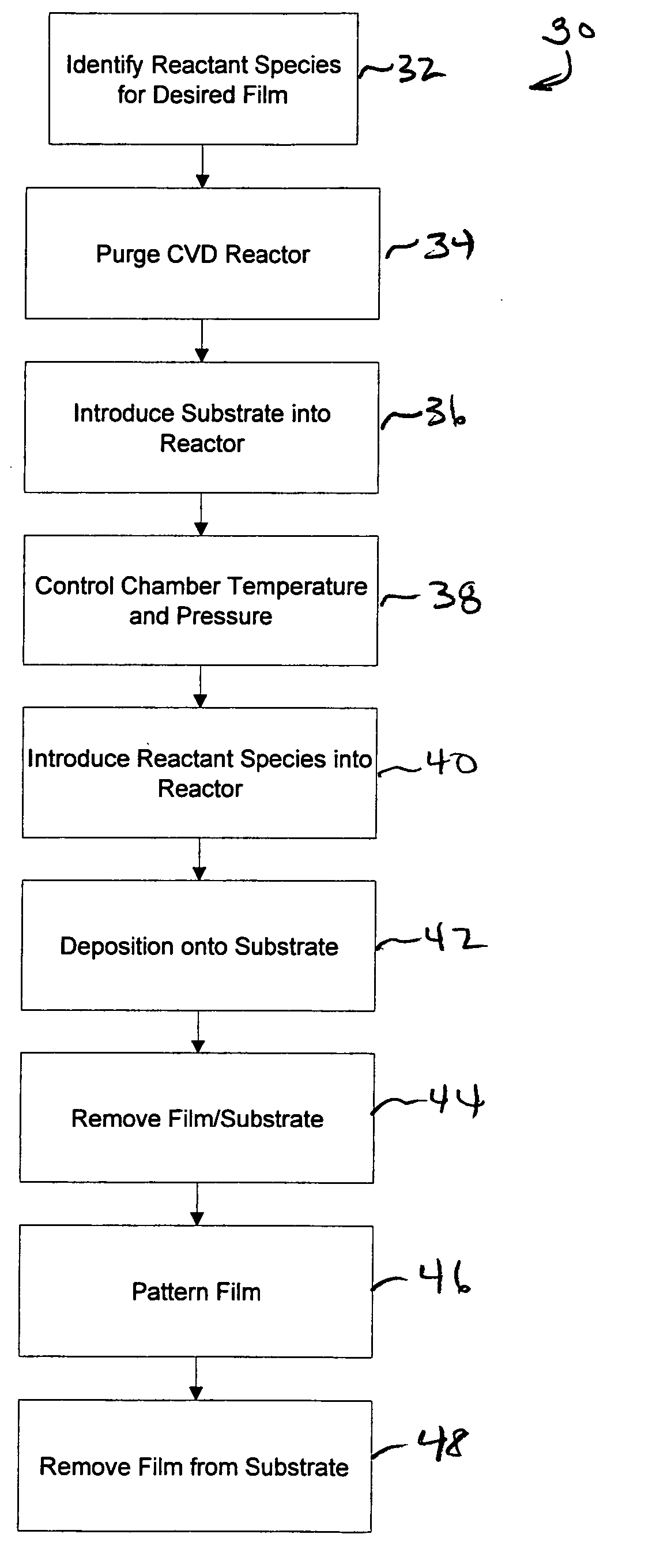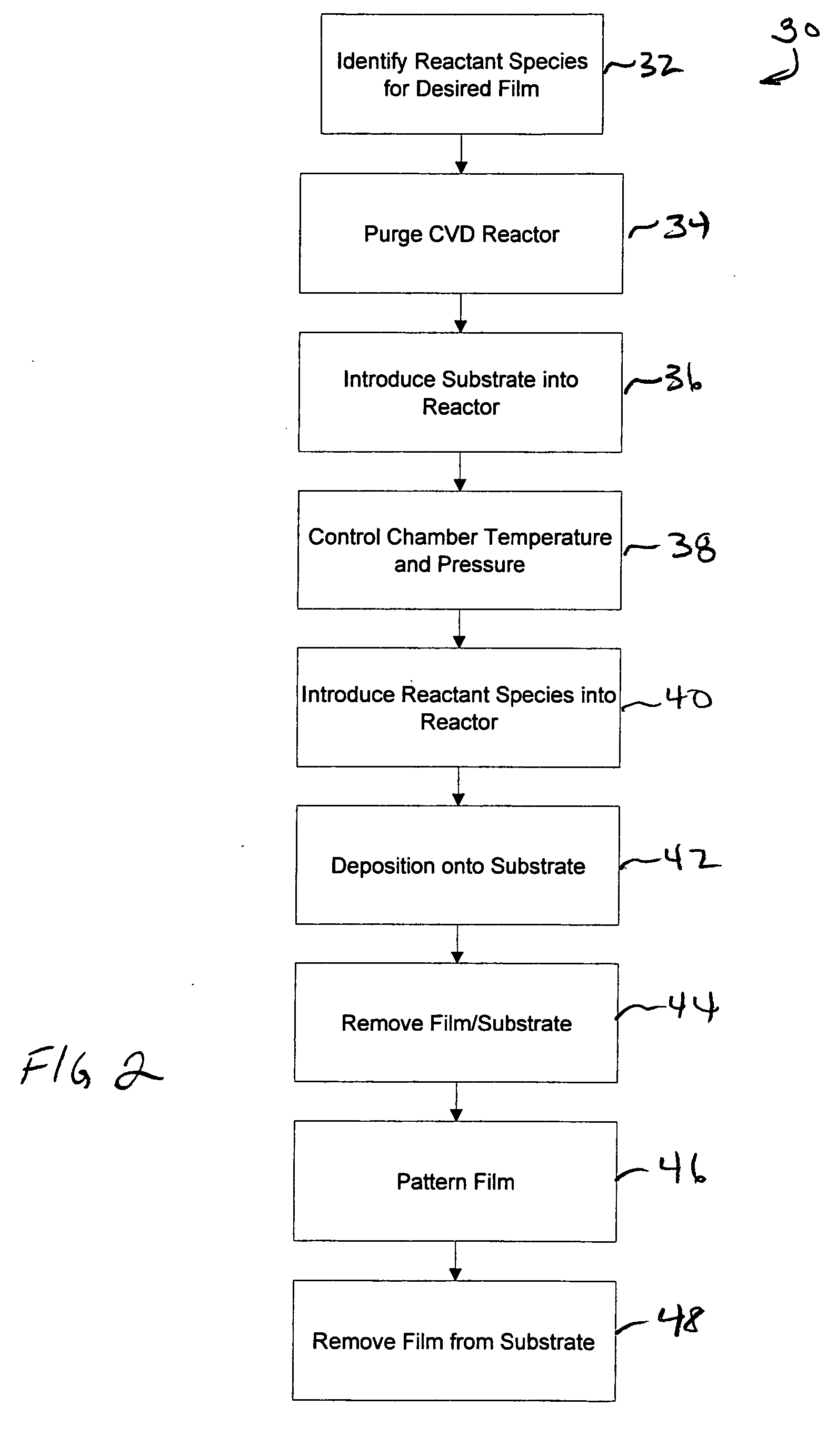Methods of making shape memory films by chemical vapor deposition and shape memory devices made thereby
a technology of chemical vapor deposition and shape memory, applied in the direction of packaging foodstuffs, blood vessels, packaged goods, etc., can solve the problems of not knowing the fabrication method of coherent films and coherent patterned films of nickel-titanium sma by cvd processing, and the inability to meet the requirements of shape and surface finish of alloys, etc., to achieve the effect of improving radio-opacity
- Summary
- Abstract
- Description
- Claims
- Application Information
AI Technical Summary
Benefits of technology
Problems solved by technology
Method used
Image
Examples
Embodiment Construction
[0078] The present invention includes an inventive high-strength shape memory and / or superelastic nitinol material as well as a process for fabricating the thin-film shape memory and / or superelastic nitinol materials, including the inventive graft material. The inventive material is characterized by having high mechanical strength and toughness exceeding that found in the art and does not require precipitation annealing to either shape set or set the transition temperature of the material. In accordance with the method of the present invention, the inventive nitinol materials may be produced for certain intended end-uses, such as MEMS and medical devices, using deposition technologies including but not limited to PVD, sputter deposition, plasma deposition, ion beam deposition or the like to form the film, and post-deposition use of etching, photolithography, machining, or ablation techniques to fashion the deposited film for an intended end-use. In addition to depositing shape memor...
PUM
| Property | Measurement | Unit |
|---|---|---|
| thickness | aaaaa | aaaaa |
| porosity | aaaaa | aaaaa |
| porosity | aaaaa | aaaaa |
Abstract
Description
Claims
Application Information
 Login to View More
Login to View More - R&D
- Intellectual Property
- Life Sciences
- Materials
- Tech Scout
- Unparalleled Data Quality
- Higher Quality Content
- 60% Fewer Hallucinations
Browse by: Latest US Patents, China's latest patents, Technical Efficacy Thesaurus, Application Domain, Technology Topic, Popular Technical Reports.
© 2025 PatSnap. All rights reserved.Legal|Privacy policy|Modern Slavery Act Transparency Statement|Sitemap|About US| Contact US: help@patsnap.com



